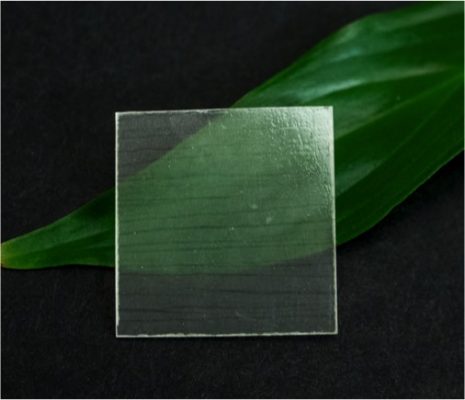Program 5: Biocomposites and wood materials (2019 – 2023)
Designing and processing of solid biocomposites and wood-based materials to obtain controlled structures in order to extend the property range of the materials, or to provide new functions.

Research program
Nanocelluloses are building blocks for wood-based nanomaterials, and lignins and hemicelluloses are also used in new materials. Program 5 is extending nanocellulose as structural components to wood “templates” based on modified wood. Initial wood modification can create nanoporosity, remove light absorbents, carbonize for electrical conductivity, etc. Delignified wood can also serve as a hierarchical aerogel with a higher degree of order.
Functional-materials activities include soft robotics for sensors and actuators, wood-template electronics, wood photonics, and ionic thermoelectric supercapacitors, which combine energy harvesting and storage with controlled discharge. The exceptional mechanical properties of oriented cellulose structures, even living plants, are combined with functionalization for ionic and electrical conductivity, active mechanical excitation, photonics, etc. Complex nanocomposite materials are created to obtain desired functions or improve device performance.
3D-printing for geometrically complex biomedical applications is investigated to combine nanoscale characteristics of cellulose with bioactive components. For biocomposites processing, melt-compounding is performed in order to improve the performance and target an eco-friendly profile. This activity is coordinated with fundamental rheology studies of thermoplastic biocomposites. The materials can replace petroleum-based thermoplastics.
Bioinspired gas-barrier films based on novel nanocomposites are investigated for packaging materials. A related concept of inorganic/cellulose hybrid composites is studied, both using 2D nanoplatelets and precipitation of inorganics on nanocellulose scaffolds. The scaffolds are strong gels based on cellulose nanofibrils, and such gels are also investigated for medical radiotherapy applications. More fundamental studies are investigating small-scale friction and wear phenomena on wood-biopolymer surfaces.
Finally, structural biocomposites, new fiber materials, and interface phenomena are investigated for materials with functionalities such as optical transmittance and photonics applications, eco-friendly characteristics, and moisture durability. Wood templates, holocellulose fibers, and new nanocelluloses are used with a focus on structure-property relationships.
Scientific impact
Functional materials: the main scientific focus is on controlling nanoscale structures and composite compositions, even in living plants, in order to reach property and performance targets for materials and devices. The main impact is expected from the combination of interesting device concepts with careful tailoring of nanoscale structures and material compositions. For biomedical materials, an impact is expected from 3D-printing applications and radiotherapy, again, from the ability to successfully control the nanostructure.
Engineering biocomposites: The basis for impact in this area is in well-preserved, eco-friendly nanocelluloses, fibers, and wood templates for improved mechanical performance. For fibrils and fibers, an impact from melt processing and rheology studies is strengthened by specific eco-friendly compositions, and molecularly tailored interfaces and surfaces. The impact from nanostructured wood templates is substantial since this is a “new” constituent combining high strength with hierarchical porosity used to design engineering materials with new functionalities, e.g., for photonics, electronics, separation, and energy applications.





